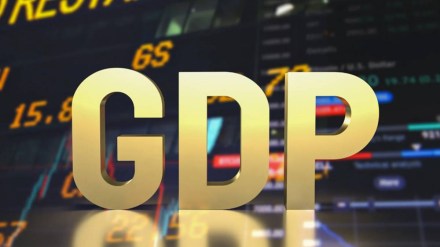India’s gross domestic product (GDP) expanded at a six-quarter high rate of 8.2% in July-September period (Q2FY26), beating all official and independent forecasts by a large margin. The growth was fuelled by the robustness across primary, secondary and tertiary sectors.
Most analysts had estimated Q2 GDP growth within a range of 7-7.7%; the Reserve Bank of India’s latest forecast was at the lower end of that band.
Key Growth Drivers
A notable jump in value creation in the manufacturing sector, resilient private consumption, a strong financial sector, a farm economy that maintained steady growth on a strong base were among the key drivers. Even the additional external headwinds caused by the 50% US tariff on most Indian goodkus could not slow the tempo much.
But the headline number was also aided in an unusual measure by an unduly low deflator-based inflation inflationrate, and a favourable base (5.6%). The nominal GDP growth rate came the closest to the headline number, after the Q3FY20, at 8.7%. In Q1FY26 also, the difference between real and nominal rates was narrow at just 1% point.
In Q1, real GDP growth of 7.8% was again significantly higher than the median of forecasts.
In the first half of the current fiscal, private final consumption expenditure (PFCF) marginally improved its share in nominal GDP to 61.4% over the year ago period, and largely stuck to the average of the three years to FY25.
Although the Goods and Services Tax (GST) reductions for a wide variety of goods came only at fag end of the quarter (September 22), PFCF registred an impressive 7.9% growth in real terms, though on a relatively weak base (6.4%).
The imminence of the price cuts for consumer durables and automobiles among other relatively price-inelastic items obviously did not hit the volume of transactions, ahead of the festive period. The consumption boost from the major income-tax relief announced in the Budget FY26 was apparently playing out through the quarter. With items that account for a third of an average household’s consumption basket witnessing GST cuts, the aggregate demand is seen to have got a fillip in the current quarter.
Analyst Caution and Revised FY26 Growth Forecasts
Chief Economic Adviser V Anantha Nageswaran said the FY26 growth outlook is now “7% or higher.” He also noted that the current low inflation situation hasn’t arisen out of weak domestic demand, but bountiful production/excess supply. “This is something that we should be okay with,” he said.
However, analysts believe that an adverse base, a hit from the US tariffs to labour-intensive industries,and a likely reduction in government capex could slow growth rate in the second half of the year. In April-October, the Centre’s capital expenditure grew by 32.4%, implying that even with a 14% year-on-year decline in the remainder of the year, the budget target could be met. Yet, the FY26 growth may well exceed 7%, and beat the official projection of 6.3-6.8% made at the start of the year.
Chief Economist at Emkay Global Financial Services Madhavi Arora pointed out that the lagged effect of monetary and regulatory easing too contributed to Q2 growth exceeding expectations “dramatically.” “Some of the (growth-propelling) factors will spill on to Q3 as well, along with improvement in consumer demand,” she said, adding that FY26 GDP growth might “comfortably hug 7%+ print.”
Stating that private consumption was the main driver of higher real growth, DK Joshi, chief economist at Crisil said the third quarter is expected to continue benefiting from some of the tailwinds. “While government investment will likely stabilise, there are hints of a belated uptick in private investments,” he said.
The gross value added (GVA), a more accurate yardrick of economic activity, grew 8.1% in Q2 as against 7.6% in the previous quarter, and 5.8% in the year-ago period. This implies a statistical help to the latest headline number, from higher taxes and lower subsidies on a year-on-year basis.
The Q2 GDP is almost entirely constituted by domestic demand; net exports brought in a minor drag.
Among the individual sectors, manufacturing grew 9.1% upon a weak base (2.2%) and “agriculture and allied sectors” by 3.5%, still a decent rate by its standards, especially since it came on a rather strong base (4.1%). Electricity grew by 4.4% and construction, 7.2%. Finacial, real estate and professional services, the single largest sector on the output side, grew by an impressive 10.2%. Among other services sectors, “public administration, defence etc.” expanded by 9.7% and “trade, hotels, transport and comminicatioon” rose by 7.4%.
